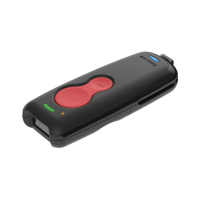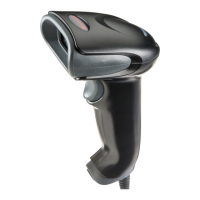42 Voyager 1602g User Guide
RF (Radio Frequency) Module Operation
The wireless system uses a two-way Bluetooth® radio utilizing adaptive frequency
hopping (APH) to transmit and receive data between the scanner and the host.
Designed for point-to-point and multiple point-to-single-point applications, the
radio operates using a license-free ISM band, which sends relatively small data
packets at a fast data rate over a radio signal with randomly changing frequencies.
This makes the wireless system highly responsive to a wide variety of data collec-
tion applications and resistant to noisy RF environments. The communication
range between the scanner and host, depending on the environment, is 33 feet
(10m). See Flexible Power Management, page 50, for information about con-
trolling this range.
System Conditions
The components of the wireless system interact in specific ways as you move a
scanner out of range, bring a scanner back in range, or swap scanners between two
hosts. The following information explains the wireless system operating condi-
tions.
Scanner Is Out of Range
The wireless scanner is in communication with its host, even when it is not trans-
mitting barcode data. Whenever the scanner can’t communicate with the host for a
few seconds, it is out of range. If the scanner is out of range and you scan a bar-
code, the scanner issues an error tone indicating that there was no communication
with the host. Refer to Out-of-Range Alarm,page 47 and Auto Reconnect
Mode,page 39.
Scanner Is Moved Back Into Range
The scanner relinks if the scanner or the host have been reset, or the scanner
comes back into range. If the scanner relinks, you will hear a single chirp when the
relinking process (uploading of the parameter table) is complete. Refer to Out-of-
Range Alarm on page 47 and Auto Reconnect Mode, page 39 for further informa-
tion.
OutofRangeandBackintoRange withBatchModeOn
Note: See Batch Mode, beginning on page 58, for further information.
The scanner may store a number of symbols (approximately 500 U.P.C. symbols;
others may vary) when it is out of range and then send them to the host when back
in range.

